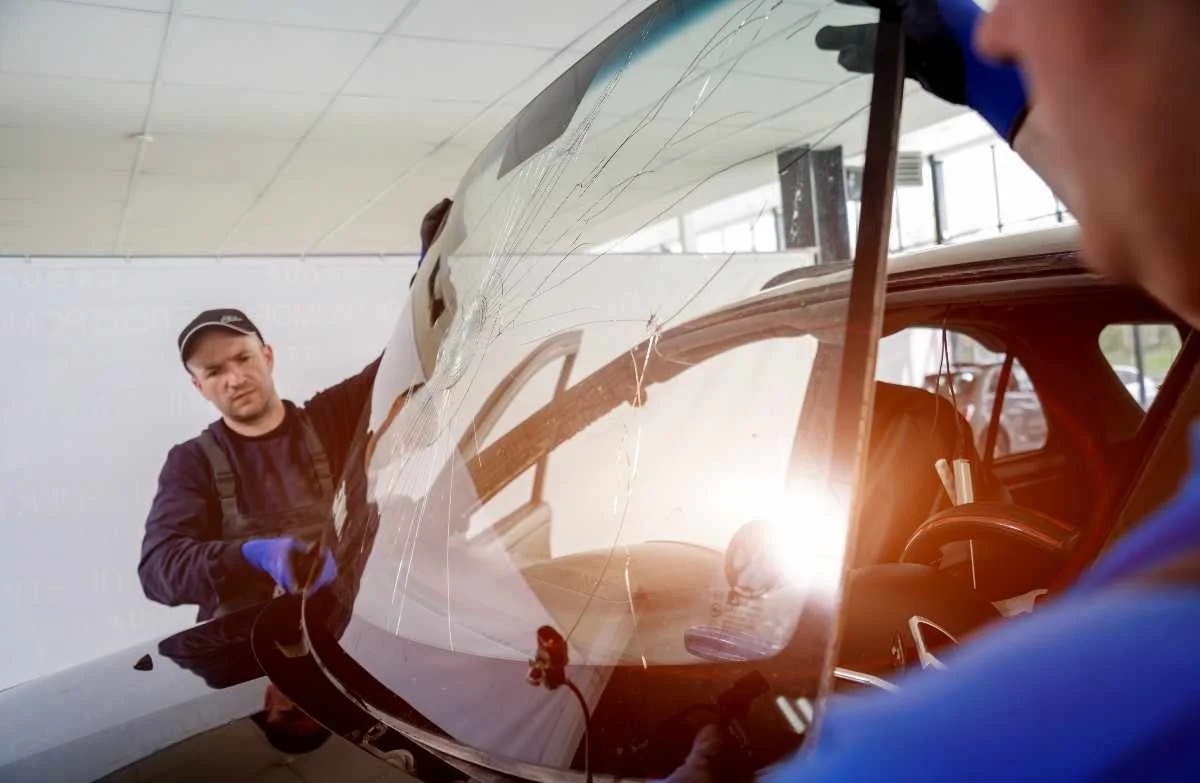Technology
How Technological Advances Are Transforming Auto Glass Safety and Performance

Current Trends in Auto Glass Technology
Today’s auto glass has come a long way from its origins as plain, simple barriers to wind and rain. From the moment you sit behind the wheel, you interact with sophisticated materials and underlying technologies designed to keep you safe and comfortable. The industry’s relentless push for innovation has resulted in windshields and windows that are more durable, visually clear, and capable of blocking harmful UV rays. These technological advances directly impact the vehicle’s safety and the overall driving experience, from noise reduction to the integration of driver-assistance systems. Staying informed about these developments helps drivers make more intelligent decisions regarding care and vehicle upgrades. If you want to learn more about how these innovations shape modern driving, a wealth of information and expertise is available to guide your journey.
As industry experts have highlighted, automakers now treat auto glass as a crucial part of a car’s structure and technology platform. Recent developments in glass composition, lamination, coatings, and sensor compatibility have improved the physical properties of windshields and elevated their role in supporting new digital and safety features inside vehicles. The result is a synergistic effect: glass that keeps passengers safer, powers modern devices, and even contributes to vehicle efficiency.
The Shift to Stronger, Lighter Materials
A breakthrough in auto glass technology is the broad adoption of advanced composites—specifically, laminated glass structures and innovative polymer layers. Manufacturers now use multiple interlayers of materials like polyvinyl butyral (PVB) and advanced resins, creating windshields that are considerably lighter yet tougher than older monolithic glass panes. Lighter glass plays a key role in reducing a car’s total weight, improving fuel efficiency, and lowering carbon emissions over the vehicle’s lifespan. At the same time, the increased strength means greater resistance to impacts from debris and accidents. For instance, research has shown that a lighter windshield can save several kilograms per vehicle, which helps with acceleration, braking, and handling, especially in electric vehicles.
Advances in material science have been a driving force behind these improvements. Their integration of ultra-thin, chemically strengthened glass balances weight savings with structural integrity, allowing automakers to meet stricter fuel standards while ensuring the highest safety for passengers. Multi-layer designs, sometimes including acoustic dampening materials, result in quieter cabins and enhanced comfort for drivers and passengers alike. It’s a win-win—better environmental outcomes without compromising safety, vision, or driving pleasure.
- Laminated, shatter-resistant windshields protect against up to 97% of UV rays.
- Triple-layer compositions quickly become the industry standard due to their durability and impact absorption.
- Advanced glass helps EVs and hybrids maximize energy efficiency by reducing drag and vehicle weight.
How Advancements Are Enhancing Vehicle Safety
Today’s windshields are more than passive barriers—they’re active, load-bearing safety components crucial in protecting vehicle occupants. When a crash or rollover occurs, laminated safety glass is engineered to adhere to the frame and prevent passengers from being ejected. Improvements in bonding techniques and the addition of tough, elastic interlayers make the glass more resistant to shattering and intrusion from foreign objects. As a result, the risk of serious injury is significantly lowered in the event of a collision, and drivers may only need a simple repair, rather than a complete replacement, after moderate impacts.
- Expert adhesives keep auto glass anchored to the body during severe crashes, minimizing the chance of ejection by as much as 70% in some scenarios.
- Laminated windshields are built to remain mostly intact after substantial impacts, even if the outer layer cracks.
- Tempered side glass is engineered to shatter into small, rounded pieces, which reduces the likelihood of deep cuts and lacerations.
Data published by the Insurance Institute for Highway Safety (IIHS) shows a strong correlation between advanced glass technologies and reduced injuries or fatalities in modern vehicles. The drive for continuous improvement in auto glass means that what protects you on the road today is the product of decades of research, and tomorrow’s innovations are just around the corner.
Integrating Smart Features Into Windshields
Auto glass is now at the forefront of smart car technology. Heads-Up Displays (HUDs) include project speed, navigation, and safety alerts onto your windshield, making essential information easily accessible while minimizing distraction. Many new vehicles come equipped with rain and light sensors embedded in the windshield, automatically activating wipers or adjusting headlights to ensure maximum visibility in changing conditions. Most impressively, Advanced Driver-Assistance Systems (ADAS) depend heavily on auto glass’s precision and optical clarity. Safeguards like automatic emergency braking, lane departure warning, and forward-collision alerts are powered by embedded cameras or sensors behind the glass, demanding perfect calibration for top performance.
- HUDs help drivers keep their gaze forward, displaying relevant data without the need to glance at an instrument panel.
- Integrated sensors and cameras are calibrated with millimeter precision for reliability and safety.
- Modern auto glass is manufactured to exacting standards, seamlessly accommodating digital displays and embedded tech.
As connected and semi-autonomous features become mainstream, the demand for crystal-clear, distortion-free windshields will grow. This means more safety and convenience for drivers than ever before, especially as innovation marches ahead.
The Push for Sustainable Auto Glass Solutions
In recent years, the automotive world has embraced a more sustainable mindset, striving to lessen its environmental impact at every level, including auto glass production. Advances in recycling methods are lengthening the lifecycle of glass and reducing the waste that ends up in landfills. Low-emission glass manufacturing processes, alongside less toxic adhesives, are helping automakers reduce their overall carbon footprint. Some manufacturers are even pushing the boundaries by embedding discreet solar cells into windshields and sunroofs, allowing them to harness solar energy without obstructing visibility or compromising safety.
Green innovations are a significant driver in developing new glass products. Automakers are committed to producing glass more responsibly and ensuring that when vehicles end their lives, glass components are repurposed adequately into new products rather than discarded as waste. This holistic approach benefits the environment and appeals to eco-conscious consumers.
- Low-energy manufacturing and recycled glass are on the rise, with a focus on closed-loop production.
- Initiatives help reclaim glass from old vehicles to be remanufactured into new windshields and windows.
- Solar glass technology is an emerging field, offering the potential to supplement vehicle power systems.
Tips for Maintaining and Repairing Modern Auto Glass
Maintenance routines must adapt as auto glass becomes more sophisticated, integrating cameras, sensors, and coatings. It’s always smart to address chips, cracks, or sensor malfunctions as soon as they appear, since minor issues can quickly escalate if left unchecked. Clean glass ensures clear vision and helps safety sensors and systems work correctly. To prevent damage, specialized cleaning solutions are recommended for coated, heated, or HUD-enabled glass. Calibrating or testing ADAS features following any major glass service is equally essential, as malfunctioning systems can put drivers at risk.
- Repairs for small chips or cracks can help retain the integrity of the original glass and maintain the accuracy of the safety system.
- Professional calibration should follow any repairs involving sensors, cameras, or driver-assistance components.
- Avoid exposing glass to sudden temperature swings, such as hitting it with hot water in winter or cranking the defroster excessively.
- Regular visual inspections can help catch and correct minor problems early.
Simple habits can extend the functional life of your auto glass, ensuring both older and newer vehicles continue to benefit from recent technological advancements for years to come.
What’s Next for Auto Glass Technology?
The next wave of advancements in auto glass is poised to further transform the role of windshields and windows in our vehicles. Engineers are hard at developing augmented reality displays that could overlay navigation data directly onto the road view, making driving even more intuitive and interactive. Self-tinting glass automatically adjusts to sun intensity and promises to reduce glare without relying on external sunshades. Future materials may have self-healing capabilities, meaning that minor scratches or abrasions could disappear on their own, prolonging the life and clarity of the glass.
As vehicles become more connected and autonomous, glass will become an even more central feature—no longer just a barrier, but a bridge to digital mobility. The era of passive glass is giving way to an age of seamless, interactive, and adaptive auto glass that supports both safety and the driving experience in ways never imagined before.
Technology
Profit in Motion: How Adaptive Pricing Drives Supply Chain Success

In today’s fast-moving market landscape, dynamic pricing —rapidly adjusting prices in response to demand, competition, or operational costs —is transforming the way manufacturers and distributors do business. This approach not only helps companies to maximize their revenue potential but also ensures they remain agile in the face of changing market conditions. Companies leveraging pricing software for manufacturing can more easily implement and maintain successful dynamic pricing strategies, providing a considerable competitive advantage.
The manufacturing and distribution sectors face unique challenges, including fluctuating raw material costs, intricate supply chains, and evolving customer expectations. Dynamic pricing, backed by robust analytics and technology, enables these companies to fine-tune their pricing models, capitalize on market trends, and respond more quickly to threats and opportunities. As technology and analytics become more accessible, dynamic pricing is no longer just for industry leaders—it’s a critical tool for businesses of every size. Still, implementing dynamic pricing is not without its challenges. Organizations must balance the advantages of agility and increased revenue with the risks of customer pushback, potential regulatory scrutiny, and the operational complexity of real-time price optimization. Companies that succeed are those that combine real-time intelligence with transparent communications, ensuring customers view price shifts as fair and justified.
Understanding how to collect, analyze, and act on pricing data is crucial to maximizing the value of dynamic pricing. By integrating automation, artificial intelligence, and strategic planning, manufacturers and distributors can transform dynamic pricing from a tactical exercise into a long-term growth driver
Understanding Dynamic Pricing
Dynamic pricing is a flexible approach that enables companies to respond rapidly to ever-changing factors, including demand, supply constraints, production costs, and competitor actions. In manufacturing and distribution, this means pricing products not on a fixed schedule, but in real-time, aligning price with value and market realities. This strategy is increasingly critical as customer expectations evolve and global supply chains grow more complex. The shift towards digitalization and data-driven operations gives companies unprecedented control over their pricing models—a trend highlighted by leading industry publications.
Benefits of Dynamic Pricing in Manufacturing and Distribution
- Revenue Optimization: Dynamic pricing enables capturing more value during periods of high demand, while stimulating sales when demand is low. This adaptive approach helps organizations avoid leaving money on the table during market peaks and reduces losses in downturns.
- Inventory Management: Since dynamic pricing can impact buyer behavior, it enables companies to balance inventory levels effectively, thereby minimizing costly overstocks or shortages.
- Competitive Advantage: Businesses that can align their prices to market conditions in real-time are better positioned to outpace competitors and satisfy customers who expect fair, value-based pricing.
Implementing Dynamic Pricing Strategies
Rolling out a successful dynamic pricing program involves several interconnected steps:
- Data Collection & Analysis: Gather detailed data on customer purchasing trends, competitor pricing, inventory status, and input costs. Automated tools and advanced analytics systems can turn massive data sets into actionable insights.
- Automation & AI: Implementing modern, AI-powered pricing tools enables real-time price adjustments. This automation allows companies to respond promptly to shifting market dynamics, ensuring optimal price points are maintained at all times.
- Customer Communication: Clearly and proactively share the reasoning behind pricing shifts, particularly during periods of rapid change. This transparency helps maintain customer trust and loyalty.
- Monitoring & Continuous Adjustment: Dynamic pricing is not a set-it-and-forget-it process. Regularly review performance, market feedback, and customer behavior, making data-driven adjustments to fine-tune pricing models.
Challenges and Considerations
Organizations must navigate several complex issues to ensure dynamic pricing delivers its promised benefits:
- Customer Perception: Widespread or poorly explained price changes can breed mistrust or pushback, especially among long-term partners or high-value customers.
- Ethical Concerns: It’s essential to avoid strategies that exploit necessity or lead to price gouging. Ethical boundaries and fairness must be at the core of any dynamic pricing initiative.
- Regulatory Compliance: Compliance with antitrust laws and anti-discrimination regulations is mandatory, particularly as pricing models grow more advanced and complex.
Case Studies
Real-world examples illustrate the measurable benefits of adopting dynamic pricing strategies:
- Specialty Chemical Company: Implementing a value-based dynamic pricing system, a U.S.-based specialty chemical manufacturer enhanced return on sales by three percentage points within just a year, as noted in research by McKinsey & Company. The company’s data-led approach allowed for smart, targeted price increases that reflected both product value and customer price sensitivity.
- Global Specialties Company: Following several mergers, this company introduced AI-driven analytics solutions to guide its pricing structure and boost profitability, achieving a return on sales improvement within the first year of adoption.
Future Trends in Dynamic Pricing
- AI and Machine Learning Integration: More manufacturers are shifting towards AI-driven systems that continuously analyze variables and provide faster, more accurate price updates, even factoring in variables such as projected raw material shortages or changing consumer demands.
- Sustainability-Linked Pricing: Manufacturers are introducing dynamic models that reward greener practices, like discounts for orders with lower carbon footprints or premium pricing for products with sustainable sourcing. This trend aligns with a larger movement towards ESG values throughout the global supply chain.
Conclusion
Dynamic pricing has emerged as a game-changing strategy for manufacturers and distributors seeking to thrive in a demanding and volatile marketplace. By harnessing the power of analytics, automation, and transparent communication, companies can set prices with confidence, maximizing revenue, managing inventory efficiently, and fostering lasting customer relationships. Addressing challenges related to perception, ethics, and regulation is crucial to fully realizing the promise of dynamic pricing while maintaining trust and compliance in the digital era.
Technology
What to Do When Your Car Battery Dies on the Road
Getting stranded on the side of the road due to a dead car battery can be stressful and inconvenient. Unexpected battery failures often occur at the most inconvenient times, leaving drivers unsure of what steps to take to resolve the issue. Understanding the signs of a weakening battery, such as dimming headlights or slow engine cranking, can help prevent being caught off guard. Being prepared with basic knowledge and safety precautions ensures you can respond calmly and effectively when your vehicle suddenly stops running.
When a battery dies, it’s essential to stay safe and assess your options before attempting any fixes. Many drivers rely on emergency roadside service to handle situations like jump-starts or battery replacements efficiently. These services provide trained assistance and equipment to get your car back on the road quickly, minimizing stress and risk. Taking precautionary measures and knowing who to call can make all the difference during such unexpected moments.
Ensure Safety First
When your car abruptly stops or fails to start due to a dead battery, your immediate concern should always be your personal safety. Move your vehicle out of the flow of traffic if possible, steering towards the shoulder or a well-lit parking lot. Activate your hazard lights promptly to alert passing vehicles to your situation. If it’s necessary to exit the car, only do so when it’s safe and use the door farthest from traffic. Stay behind protective barriers, if available, and maintain a safe distance from passing vehicles.
Diagnose the Issue
Before attempting any fix, confirm that the battery is truly the culprit. Common warning signs include dim or flickering headlights, interior lights that won’t turn on, a persistent clicking sound when turning the key, or total inactivity from electrical components such as the radio or windows. Visual inspection matters too—check the battery terminals for corrosion buildup and ensure the cables are secure. Excessive corrosion can prevent your battery from functioning even if it still holds a charge.
Jump-Starting Your Vehicle
If help is nearby or you have a set of jumper cables along with another vehicle, jump-starting is a practical solution. Here’s how to do it safely and effectively:
- Position both cars close enough that the cables can reach, but ensure they don’t touch each other.
- Switch off both engines, leaving each car in park (or neutral for manual transmissions) and activate the parking brakes.
- Connect one red (positive) clamp to the positive terminal of the dead battery.
- Attach the other red clamp to the positive terminal of the good battery.
- Connect a black (negative) clamp to the negative terminal of the charged battery.
- Connect the other black clamp to an unpainted metal surface or the engine block of the car with the dead battery, keeping it away from the battery itself.
- Start the operational vehicle and let it run for a few minutes.
- Try starting the car with the dead battery. Once it starts, let both vehicles run for five to ten minutes to ensure charging stability.
- Remove the cables in the reverse order, avoiding contact between the clamps as you do so.
Calling for Roadside Assistance
If you’re unable to resolve the issue or lack the tools to try, calling in professional help is the safest and fastest move. Roadside assistance from auto clubs, insurance providers, or dedicated services can deliver both a jump-start and help you arrange towing if needed. When contacting roadside help, have your vehicle’s details and your exact location ready to streamline your service request. Keeping your membership or insurance information accessible will also expedite support.
Using Portable Jump Starters
Portable jump starters have empowered drivers to deal with battery emergencies independently. Before heading out, make sure your jump starter is fully charged. To use, attach the positive and negative clamps as directed by the manufacturer (typically to the battery terminals and an engine block or grounding point). Then, power on the device and attempt to start your engine. Afterward, detach the clamps in reverse order and recharge your jump starter as soon as possible.
Always keep your device manual handy or review the instructions online to ensure you follow the correct sequence for both safety and effectiveness.
Preventive Measures
An ounce of prevention can save a lot of hassle on the road. Make it a point to inspect your battery and its terminals regularly for signs of wear, swelling, or corrosion. Keep all lights and accessories turned off when your car isn’t running to prevent draining. Avoid making repeated short trips that prevent your battery from charging fully. If you’re heading into extreme weather, have your battery’s charge capacity tested, as both intense heat and cold can impact its performance and lifespan.
Most experts recommend considering battery replacement every three to five years to minimize the risk of unexpected failure.
Handling Battery Failure in Remote Areas
Breaking down in a sparsely traveled or remote location can be more stressful and potentially dangerous. Start by assessing whether you have a cell signal to call for help. In areas without coverage, an emergency beacon or satellite communicator can be invaluable for providing a means of communication. Remain with your vehicle—it serves as a visible landmark for rescuers and provides shelter.
Practice energy conservation by limiting the use of electrical devices, and signal distress with a raised hood or brightly colored fabric on your antenna. Keep a basic emergency kit in your vehicle, containing essentials like water, non-perishable snacks, blankets, a flashlight, and a portable phone charger
Conclusion
A dead car battery doesn’t have to ruin your plans or jeopardize your safety. By staying calm, prioritizing safety, and using the right strategies—whether jump-starting yourself, calling for help, or preparing for emergencies—you’ll be able to handle most situations with confidence. Routine vehicle checks and a well-stocked emergency kit will help you stay ahead of trouble and keep your journeys smooth and safe.
Technology
Proven Strategies to Enhance Local SEO for Small Businesses

In today’s digitally driven market, local search optimization has become essential for small businesses hoping to attract nearby customers and stand out against competitors. Leveraging local SEO strategies ensures your business appears when customers are searching for services or products you offer in your area. Taking critical steps—such as optimizing your business profiles and creating relevant local content—not only increases your chances of being found but also brings more customers directly to your doorstep. For tailored SEO strategies that deliver results, you can partner with specialized agencies such as https://victorious.com/seo-agency-austin/ to maximize your local visibility.
As consumers increasingly turn to online platforms to find businesses close to them, ensuring your company ranks high in local search results is vital for sustained growth and relevancy. Google reports that searches including the phrase “near me” have increased dramatically, making local SEO essential for attracting both foot traffic and digital engagement. Implementing key strategies can help you reach more customers at critical moments in their buying journey.
From optimizing your Google Business Profile to consistently using accurate contact information online, this guide offers actionable, proven strategies to ensure your business stands out locally. Emphasizing user experience, mobile readiness, online engagement, and genuine community relationships all factor into a robust approach that builds your digital presence and grows your business.
These tactics are supported by industry data and best practices recognized by leading marketing experts.
Optimize Your Google Business Profile
One of the foundational elements of effective local SEO is a complete and optimized Google Business Profile (formerly Google My Business). Claim your listing and ensure it’s regularly updated with accurate information, such as your business category, hours, location, and phone number. Upload high-quality photos, respond to customer questions, and publish timely updates to foster engagement.
Ensure Consistent NAP Information
NAP stands for Name, Address, and Phone number. Maintaining consistency with your NAP across all online platforms including your website, local directories, and social profiles is crucial. Discrepancies confuse both search engines and customers, which can hurt your rankings. As highlighted by Forbes, ensuring uniformity in this data builds trust with both users and algorithms, ultimately supporting higher visibility in local search results. Conduct regular audits to identify and correct inconsistencies across all digital touchpoints to strengthen your local SEO.
Conduct Local Keyword Research
To reach customers who are searching for products or services in your area, research and target geo-specific keywords relevant to your business. According to Search Engine Land, using data-driven insights can help uncover the exact terms local consumers use when searching online. Incorporate these keywords organically in your website copy, meta tags, blog content, and image alt text. Doing this will make your business more discoverable for those intent on purchasing local goods or services.
Develop a Mobile-Friendly Website
Most local searches happen on a mobile device. A responsive, fast-loading website ensures visitors can easily browse your offerings, find your location, and contact you right from their phones. Google’s mobile-first indexing means that a mobile-friendly website is no longer a bonus—it’s a necessity for local SEO. Consider using Google’s Mobile-Friendly Test tool to identify and fix usability issues that might be holding you back.
Create Localized Content
Showcasing your connection to the local community through relevant content signals to both search engines and prospects that you are a trusted part of the neighborhood. Publish blog posts about community events, support local causes, and address location-specific topics in your content strategy. Providing value with local insights helps you rank for more keywords and attract a dedicated local following.
Build Local Backlinks
Earning links from reputable local organizations, sponsors, and blogs establishes your business as a trusted authority within the community. These backlinks signal to search engines that your website is credible and relevant, helping boost your visibility in local search rankings. To build these connections, consider joining local chambers of commerce, sponsoring neighborhood events, or collaborating with community-driven initiatives.
Additionally, participating in relevant local directories and industry-specific listings can further strengthen your backlink profile. When your business appears alongside respected local entities, it reinforces your reputation and increases referral traffic from audiences already interested in your services. Over time, these strategic link-building efforts not only enhance your website’s authority but also expand your reach, helping you connect more effectively with nearby customers and solidify your presence in local search results.
Leverage Social Media
An active presence on social media platforms helps you engage with local customers and amplify your message. Share updates about specials, local events, and company news. Use location-based hashtags and geotags to appear in searches relevant to your area. Social signals play a supporting role in local SEO and help increase both traffic and brand recognition.
By implementing proven local SEO methods, small businesses can achieve maximum visibility in local search results and become go-to destinations within their communities. A strong local SEO strategy ensures that when customers search for nearby products or services, your business stands out among competitors. Consistency across web profiles, along with high-quality, locally focused content, helps build trust with both search engines and potential customers. Active engagement through reviews, updates, and community interactions further strengthens your online presence. Together, these practices create a lasting impact that drives traffic, boosts credibility, and fosters long-term customer loyalty.
-

 Technology8 months ago
Technology8 months agoRevealed: 8093642079 – Find Out Who’s Behind the Number
-

 Technology11 months ago
Technology11 months agoRaterpoint: Revolutionizing Online Content Evaluation and Feedback
-

 Business4 months ago
Business4 months agoHow Horseback Adventures Foster Connection and Wellness
-

 Technology11 months ago
Technology11 months agoDetecting AI-Generated Text: Tips and Techniques
-

 Technology10 months ago
Technology10 months agoFDXMZ24: A Comprehensive Guide
-

 Entertainment11 months ago
Entertainment11 months agoFappelo: How to Engage with This Exciting New Phenomenon
-

 Technology10 months ago
Technology10 months agoPerchance AI | Intelligent AI Solutions for Your Business
-

 Blog10 months ago
Blog10 months agoBunkralbum: What You Need to Know About This Intriguing Concept
